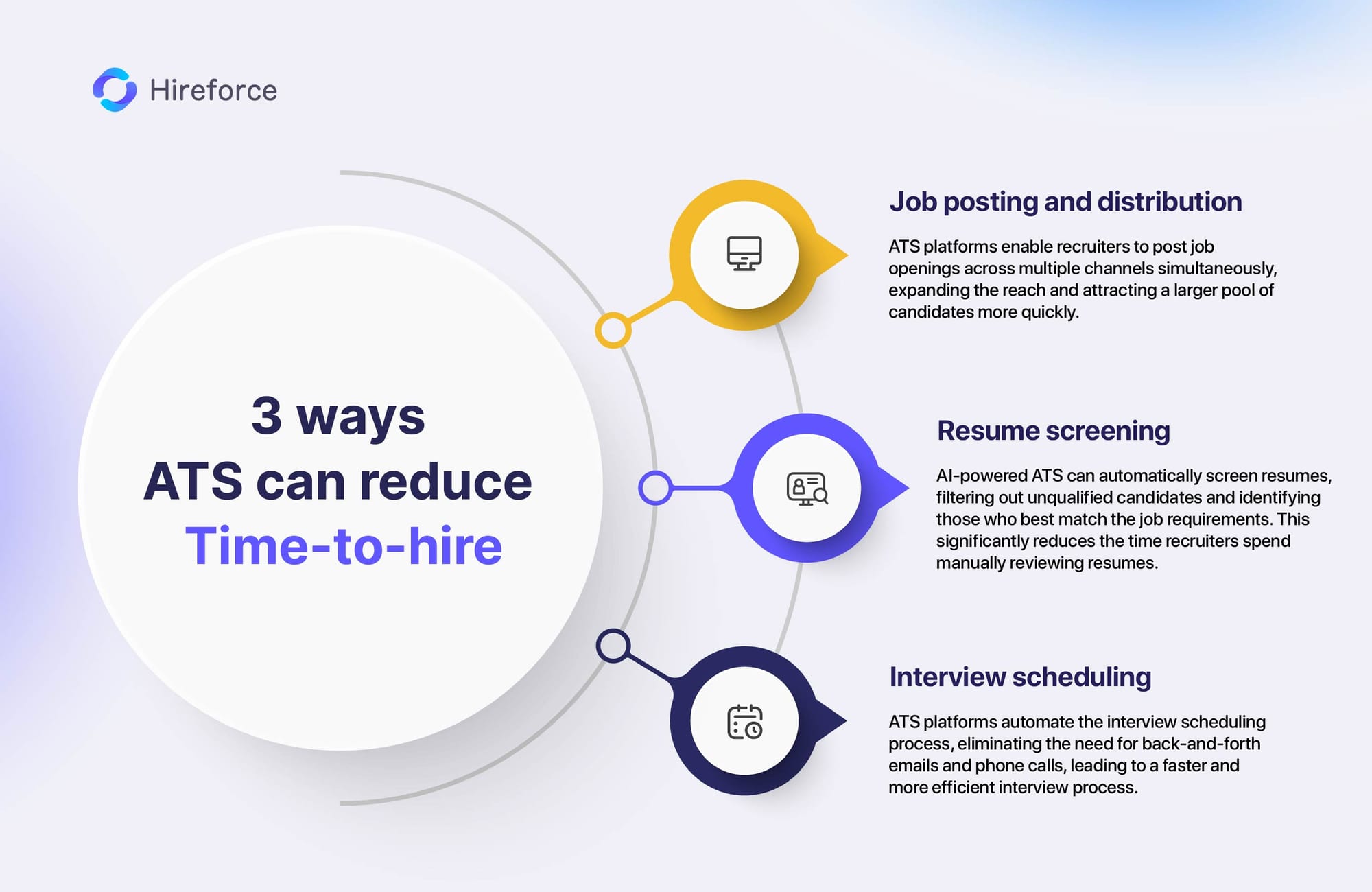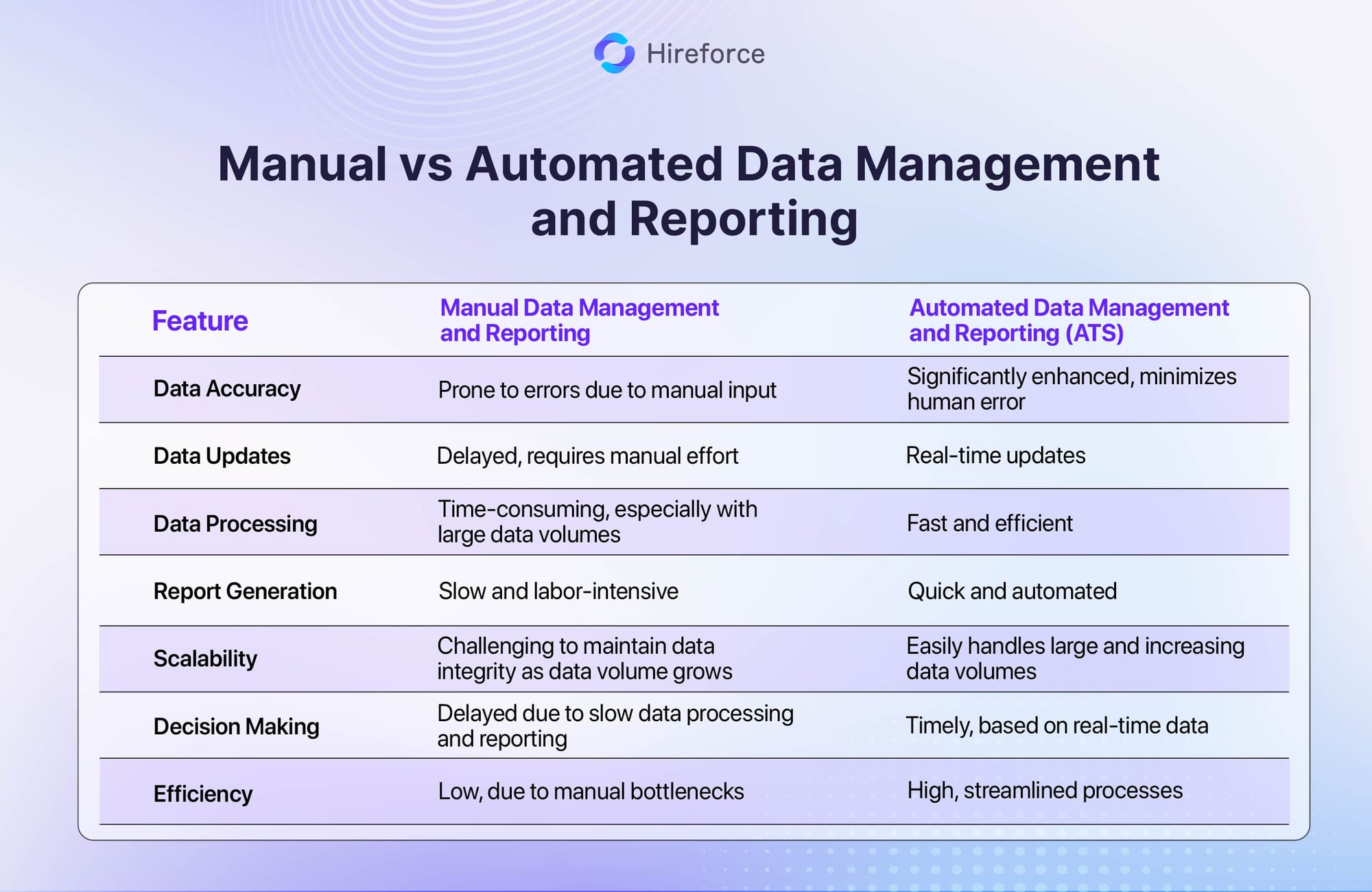Applicant Tracking Systems (ATS) have become essential recruitment tools for businesses of all sizes, automating and streamlining the hiring process. These platforms extend beyond increasing efficiency; they provide measurable improvements across key performance indicators. This article explores the quantifiable benefits of ATS, examining their impact of automation on time-to-hire, cost-per-hire, administrative burden, and data accuracy.
Impact on Time-to-Hire
Time-to-hire, a critical metric that measures the time taken to fill a vacant position, can significantly impact costs, productivity, and business opportunities. Lengthy hiring processes can lead to increased expenses, decreased productivity due to unfilled roles, and potential loss of revenue from missed opportunities. ATS solutions can significantly reduce time-to-hire by automating tasks such as:
- Job posting and distribution: ATS platforms enable recruiters to post job openings across multiple channels simultaneously, expanding the reach and attracting a larger pool of candidates more quickly.
- Resume screening: AI-powered ATS can automatically screen resumes, filtering out unqualified candidates and identifying those who best match the job requirements, significantly reducing the time recruiters spend manually reviewing resumes.
- Interview scheduling: ATS platforms automate the interview scheduling process, eliminating the need for back-and-forth emails and phone calls, leading to a faster and more efficient interview process.
» Utilize ATS to decrease the Time to Hire
Studies have shown that ATS can shorten the hiring cycle by up to 60%. LinkedIn data also found that ATS usage makes filling job vacancies 20% faster, and 86% of ATS users report reduced time-to-hire. Additionally, research suggests that automated recruiting processes could save up to 75% of hiring time. These findings highlight the significant impact of ATS on reducing time-to-hire, enabling organizations to fill roles faster and minimizing the negative effect of vacancies.

Reduce Cost-per-hire
The Society for Human Resource Management (SHRM) reports that the average cost-per-hire across industries is nearly $4,700. This key metric includes expenses such as advertising, recruitment agency fees, and internal resources. ATS platforms can decrease the cost-per-hire by streamlining the hiring process.
Applicant Tracking Systems (ATS) can reduce reliance on recruitment agencies, saving on agency fees and the overall recruitment budget. They also optimize resource utilization by automating repetitive tasks, allowing recruiters to focus on strategic activities and improving overall recruitment efficiency. Additionally, ATS platforms improve candidate quality by leveraging intelligent algorithms and data-driven insights to identify and attract candidates who are a better fit, reducing costs associated with employee turnover and bad hires.
While specific cost reductions vary depending on the organization and ATS implementation, studies have shown that ATS can significantly reduce cost-per-hire. By optimizing recruitment spending, ATS platforms contribute to a greater Recruitment ROI (return on investment) for hiring efforts.

Reduction in Administrative Tasks
Administrative tasks, such as manually reviewing resumes, scheduling interviews, and managing candidate communication, can be time-consuming for recruiters. ATS platforms automate many of these tasks, freeing up recruiters to focus on more strategic initiatives, such as:
- Building relationships with candidates: With reduced administrative burden, recruiters can dedicate more time to engaging with candidates, building relationships, and creating a positive candidate experience.
- Employer branding: ATS platforms can help enhance employer branding by providing a seamless and positive candidate experience, attracting top talent and improving the organization's reputation.
- Data analysis and reporting: ATS platforms provide valuable data and analytics that can be used to improve recruitment strategies and make data-driven decisions.
Furthermore, research suggests that implementing an ATS can save significant costs by reducing the time spent on recruitment tasks. Recruiters can save up to $12,000 yearly by utilizing an ATS to streamline their workflow and reduce time spent on administrative tasks. By automating administrative tasks, ATS platforms empower recruiters to focus on higher-value activities that improve hiring outcomes and overall organizational success.

Improvement in Data Accuracy
Applicant Tracking Systems (ATS) significantly enhance data accuracy and enable real-time updates, which are crucial competitive advantages for businesses. Traditional manual input methods are prone to errors and inconsistencies, mainly when dealing with large volumes of data.
The time-consuming nature of manual data extraction, processing, and report generation can lead to delays and inefficiencies, especially when handling thousands of candidate profiles. Moreover, ensuring data integrity and accurate tracking becomes increasingly challenging as the volume of data grows without the support of automation tools.
In contrast, ATS automates these processes, minimizing the risk of human error and providing up-to-the-minute information. This real-time access to data allows for more informed and timely decision-making throughout the hiring process. By streamlining data management and eliminating manual bottlenecks, ATS enables businesses to optimize recruitment efforts and improve overall efficiency.

Summary
Applicant Tracking Systems help you reduce time-to-hire and cost-per-hire by automating tasks like job posting and resume screening. This allows recruiters to focus on building relationships and data analysis, leading to better hiring decisions. ATS also streamlines data management, providing real-time access for informed decision-making.
Overall, ATS implementation saves time and money, increases productivity, and improves data accuracy, contributing to organizational success.




